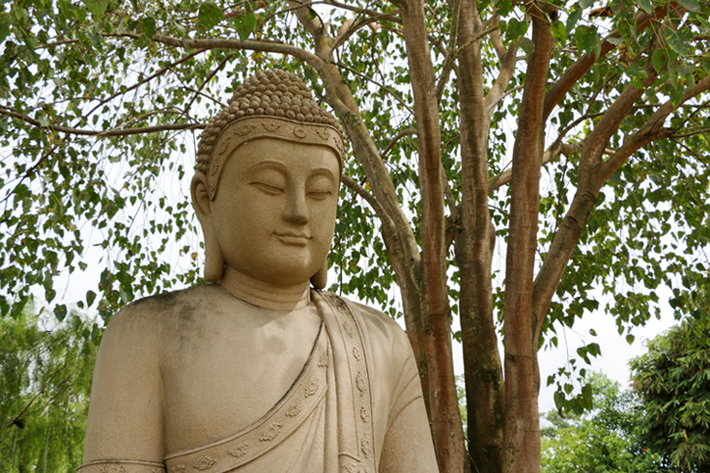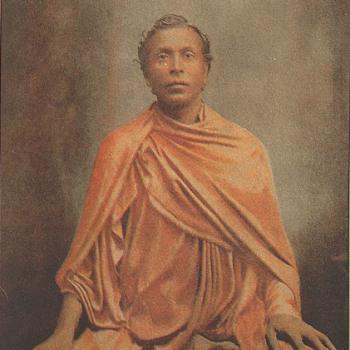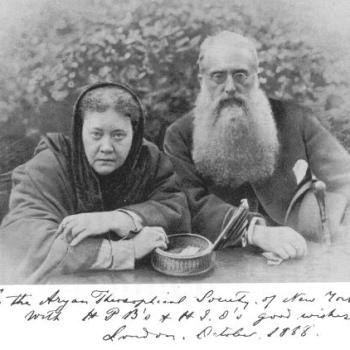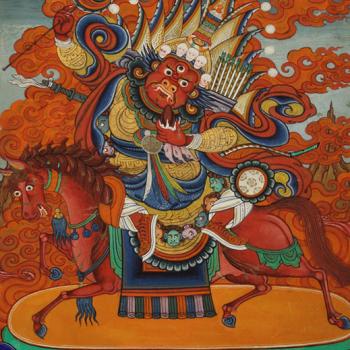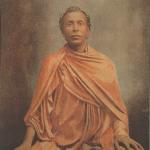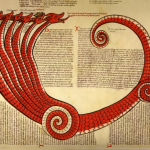How many days did Buddha sit under the Bodhi Tree? The standard answer is forty-nine days. But there are several other answers.
If you are new to the story: The foundational story of Buddhism tells us that a young man named Siddhartha Gautama, the son of a king, left his family to become a wandering mendicant and seek enlightenment. After a time he vowed to sit in meditation under a large pipal tree and not move from that spot until he had realized enlightenment, the wisdom that relieves all suffering. So, in a place called Bodh Gaya, that’s what he did. And when he realized enlightenment he became the Buddha. The pipal tree ever after was called the Bodhi Tree, or “tree of awakening.”
There’s a lot more to the story, but that’s as much as you need to know to follow this post. This event is observed on different days following a lunar calendar in much of Asia, but in some schools the date has been fixed on the Gregorian calendar on December 8.
Many essays about the Buddha’s enlightenment say that say he sat for forty-nine days, and that this number comes from “Buddhist texts.” I have been a formal student of Zen Buddhism since 1988. Over the years I have occasionally tried to find out where the number forty-nine comes from. And I confess I still don’t know. No one ever sites a specific scripture.
Why Forty-Nine Days?
The early Buddhist scriptures that might plausibly date to the time of the Buddha are a huge collection of texts that are not organized in chronological order or by subject matter. And there is no one text in the early canon that provides the complete story of the Buddha’s enlightenment. Instead, there are many suttas scattered throughout the canon in which the Buddha or some other narrator discusses some part of the story of the Buddha sitting under the Bodhi Tree. I take it intrepid scholars of many centuries past stitched all these narratives together to arrive at an event that took forty-nine days. (If anyone reading this has a different explanation, please leave a comment.)
Some narratives tell us that before he began to meditate the Buddha had been fasting for forty-nine days and had decided that wasn’t the way. The traditional Buddhist mourning period also is forty-nine days. Perhaps the number forty-nine has some symbolic meaning, although no one seems to know what it is. I have not found that the number forty-nine has any particular significance in the older religious traditions of India. I did find that according to the ancient cosmology of Jainism some classifications of insects — bedbugs and lice, for example — live for forty-nine days, but I don’t think that’s related.
Further, at what point during these forty-nine days did Siddhartha Gautama realize enlightenment and become the Buddha? A story favored in the Zen tradition is that enlightenment blossomed after the first night of meditation, when Siddhartha looked up and saw the morning star. But that would have been a busy night, considering that (in the various stories scattered about in the canon) Siddhartha was first tempted by dancing girls, accosted by demon armies, and otherwise visited by countless discouragements. Yet he kept sitting, and he continued to sit in meditation for some time after enlightenment. Perhaps it’s helpful to understand that in Zen and some other Buddhist traditions linear time is considered an illusion.
Did Buddha Sit Under the Bodhi Tree?
Early Buddhist history, including the Buddha’s biography, was not well recorded. This is a point I discussed in an earlier post, Will Ancient Gandharan Scrolls Change Buddhist History? The story of the life of the Buddha seems to have evolved over time until it reached its classic form in an epic poem called the Buddhacharita, composed about 100 CE, give or take. A standard English translation of the Buddhacharita that I consulted doesn’t say anything about forty-nine days, by the way.
The oldest extant physical copies of the Pali Canon, believed to be the most complete collection of the original teachings of the Buddha, date to around the 5th or 6th century CE, or roughly more than eight hundred to a thousand years after the life of the Buddha. (In the early 20th century historians estimated that the Buddha lived from 563 to 483 BCE. Today a number of scholars dispute those dates and believe he lived a century or so later. Current scholarship places the death of the Buddha as possibly about 400 BCE to as late as 261 BCE.)
In truth, there is so little corroboration that the Buddha lived at all that to historians he is more of a hypothesis than a historical figure. But that doesn’t mean there was no Buddha. The best argument there was a Buddha are the teachings themselves. “This mass of teachings all has a consistency and a coherence that point to a single original intelligence,” writes Karen Armstrong, “and it is hard to see them as a corporate creation.” (Karen Armstrong, Buddha [London: Penguin, 2001], p. viii) However, it’s safe to say the Buddha’s life story was heavily mythologized long ago.
As a historical fact, then, we can’t say how many days the Buddha sat under the Bodhi Tree, or even if he sat there at all. The oldest physically extant and datable corroborations of the enlightenment story that I know of are the Ashoka pillar and Vajrasana, or “diamond throne,” left at Bodh Gaya by the Emperor Ashoka on about 260 BCE. Ashoka placed the Vajrasana on the very spot where, it was believed, the Buddha sat under the Bodhi Tree.
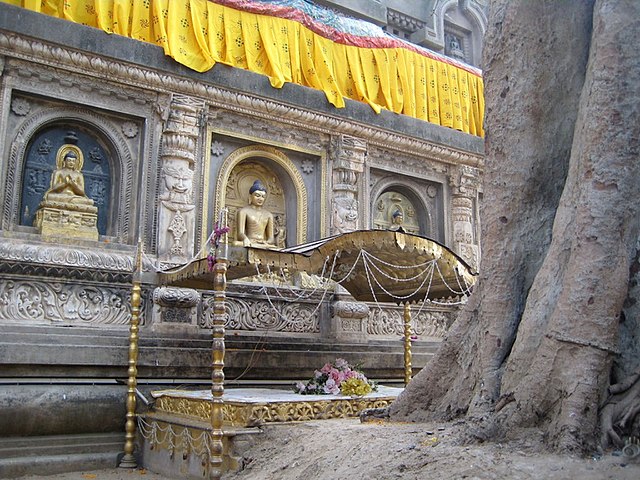
After Buddha Sat Under the Bodhi Tree
Tradition says that Siddhartha Gautama was 35 years old when he became the Buddha, and that the Buddha lived to be 80. He spent those forty-five years teaching and guiding others toward realizing enlightenment themselves. And then, for the next twenty-five or so centuries his teachings spread throughout Asia and eventually the world. In time images of the Buddha also spread, although not every Buddha image is of the historical Buddha. Buddhist iconography portrays many Buddhas who, usually, represent some aspect of enlightenment or practice. See, for example The History of Budai, the Laughing Buddha.
Westerners sometimes object to statues of the Buddha on an altar. In the early scriptures the Buddha explicitly said that he wasn’t a god (Dona Sutta, Anguttara Nikaya 4.36). But the Buddha on an altar usually wouldn’t represent just the historical Buddha, but the teacher and the teachings — the dharma — which are revered. Or, the Buddha might represent Buddha Nature, which in some schools is the foundation of all beingness; the basis of who we are.
When I was a very new Zen student I remember some other students objecting to bowing to the Buddha on the altar. “That’s you up there,” a monk explained. “You’re bowing to yourself.”
The Buddha Under the Bodhi Tree Today
We can understand the story of Buddha under the Bodhi Tree as a historical event, or we can understand him as an archetype. As Carl Jung explained, archetypes are images or themes that come from collective unconscious and have universal meanings that we intuitively recognize. Or, we can understand the story as myth, as defined by Karen Armstrong — A myth is something that in some sense happened once but which also happens all the time.
In a lovely essay titled “The Example of the Buddha” in Tricycle, The Buddhist Review, Joseph Goldstein said that viewing the Buddha’s life as an archetype or myth “becomes a way of understanding our own experience in a larger and more profound context, one that connects the Buddha’s journey with our own.” See also STAR OF THE EAST A Zen Dharma Talk for Rohatsu by Edward Sanshin Oberholtzer. (Rohatsu is the Japanese name of the observance of the Buddha’s enlightenment.)
Viewed in this light, the answer to “how many days did Buddha sit under the Bodhi Tree?” is that the days cannot be counted, because in a sense he sits there still.
